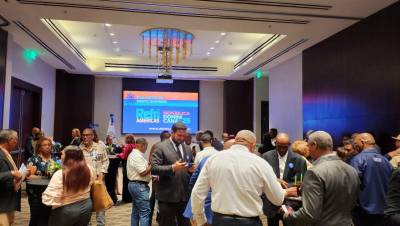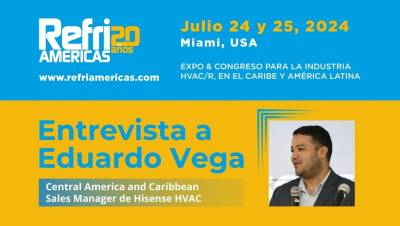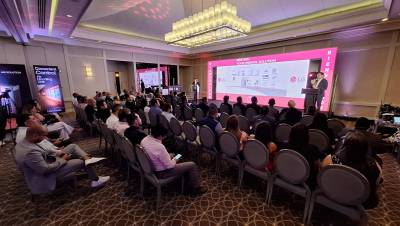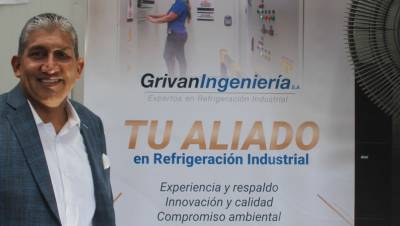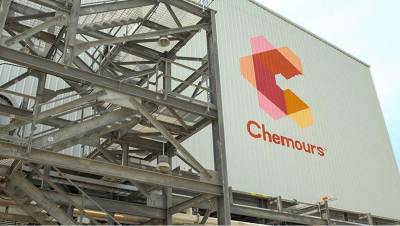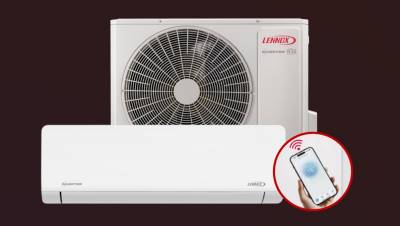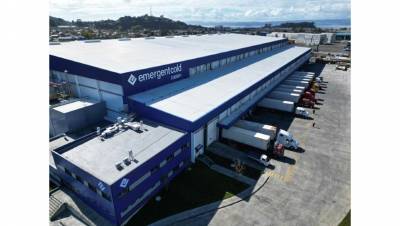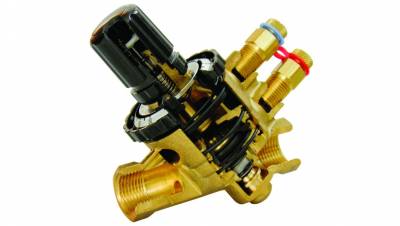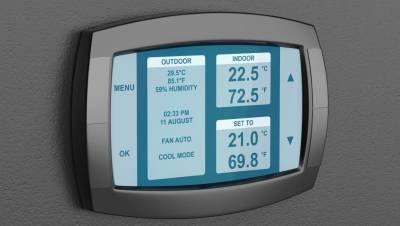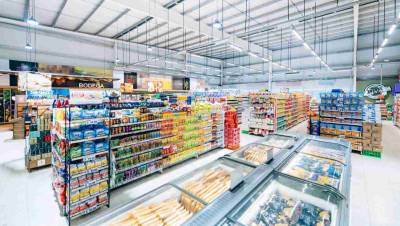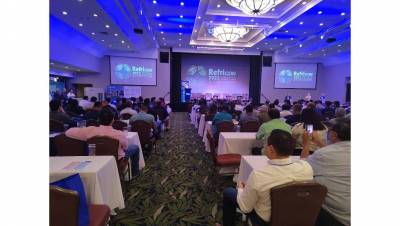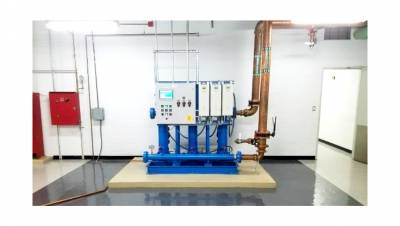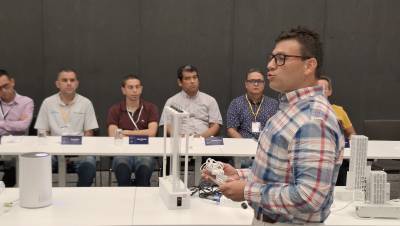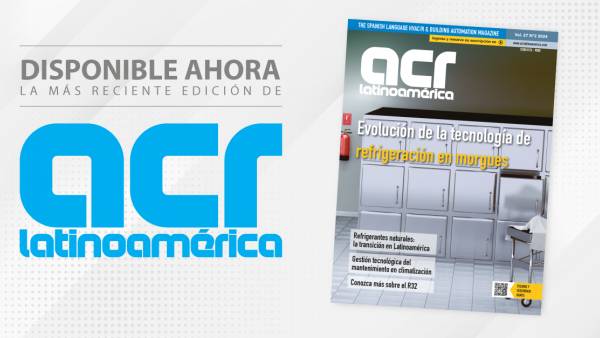Industrial refrigeration systems mainly use electrical energy, which is used to move compressors, motors and other associated systems. The use of industrial refrigeration is widely used by the food industry and also by other industrial processes. In order to promote the efficient use of energy in this type of systems, it is necessary to know well the existing options in the generation and distribution systems, as well as the existing opportunities in their final use.
As a first step of energy diagnosis, it is extremely important to know the facilities very well. Systems can be varied and of varying complexity. It is important to identify the associated equipment and generate a scheme of the facilities, in addition to physically representing them in a layout of the plant. Below is a typical scheme of a cooling system. This can have multiple compressors, evaporators, condensers and expansion systems.
Ideally, it would be of great benefit to have an energy balance of the facilities, in order to understand how the cooling energy is consumed. This is not always available, but it could be very useful when looking for U.S. opportunities.

Another issue of great relevance is to establish the parameters of operation, throughout a day, month or year. There may be seasonalities of use that must be clearly identified. Performing instantaneous measurements of operation, as well as over a period, will help to verify and identify the operating regime of the system.
It is recommended to establish energy consumption indices, such as electricity consumption per tonne of chilled product (kWh/ton). This will help monitor the energy use of the facilities.
Addressing the issue in great depth is not possible in this article, that is why only a couple of measures have been selected, which the authors have identified during the conduct of energy audits during this year.
EE opportunities in cold generation
Increased evaporation temperature
The higher the evaporation temperature of a cooling system, the lower its energy consumption. An increase of 1°C could mean savings ranging from 1% to 4%.
The reduction in the specific volume of the refrigerant, associated with the increase in evaporation temperature, affects the refrigeration capacity of the compressor and the losses in the suction line. It is possible to estimate that for every 1ºC increase in evaporation temperature, an increase of 4% to 6% in the refrigeration capacity of the compressor could be obtained.
Some ways to reduce the evaporation temperature are:
•Keep evaporators ice-free.
•Avoid obstructions to the flow of air in the cold chambers.
•Keep heat exchangers free of clogging, oil, etc.
• Avoid the accumulation of oil from the compressors in the evaporators, for this it is necessary to correctly size the suction lines and use efficient oil separators.
•Periodically clean or change coolant filters, in order to avoid minimizing pressure losses through them.
• Raise the evaporation temperature to the highest possible value, depending on the needs of the project.
In one of the studies carried out by the consultants, for a table grape export plant, it was possible to identify the following situation:

•The plant's cooling system was expanding. During one of the visits it was possible to observe that there were 2 maintenance chambers for 0°C and 3 pre-cold tunnels.
•There were 9 evaporator units in cold chambers, 2 compressors in the engine room and an evaporative condenser next to the engine room. The complete refrigeration system uses ammonia (NH3) as a refrigerant. The detail of the installed power of the equipment is presented in Table No. 1.
•It was identified that the work of the compressors was in the appropriate range in terms of working pressures and consequently performance. It was verified that the plant works at pressures equivalent to evaporation temperatures of -12.5ºC and condensation temperatures of +32º C.De according to the experience of the consultants, it was estimated possible that the compressors would be able to provide the necessary control staggering to maintain evaporation temperatures higher and not less than -10°C. The following analysis shows that this difference, only 2.5ºC, can mean significant operational cost savings.


Mycom N6WB Compressor Performance Table
The table presents the capacities of the existing compressors, model N6WB. With the current evaporation temperature of -12.5ºC, it is possible to extrapolate the performance of each of the compressors, corresponding to 80.6 tons of refrigeration or 241,983 kcal/h. It is possible to appreciate that the performance of each compressor at an evaporation temperature of -10ºC is 90.1 tons of refrigeration or 270,840 kcal/h (blue arrow). This difference in yields implies almost a 12% increase in capacity.
Using a simple logic, this proposal tells us that if the equipment is in an operating condition of 12% higher capacity, its hours of operation for the same amount of product to be cooled would be 12% lower than the current one.
In practice, the increase in the evaporation temperature leads to an increase in the demand on the compressor's electric motor. This implies that there is an increase in the electrical consumption of this engine, but in a smaller percentage and not greater than 50% of the increase in refrigeration performance. It was estimated that the energy efficiency increase of the compressor could reach a value of 7%.
Both the evaporators and the evaporative condenser in the system appeared to be properly sized. The electrical power of the compressor motor had an adequate margin, where 90 KW (120 HP) are suitable to handle evaporation temperatures of up to +5ºC according to the manufacturer's catalog.
It was estimated that the investment needed for the control elements, which would help to carry out a fine regulation process, should not exceed $1,000,000. The support of the equipment supplier and the system installer were of the utmost importance in identifying this opportunity. This type of regulation must always be evaluated by the supplier or provider of maintenance services, since it will depend on the design conditions of the plant. The following table summarizes the opportunity to raise the evaporation pressure from -12.5 ºC to -10ºC.
This is a clearly attractive EE project and its immediate implementation was recommended. This type of opportunity implies an action that entails a low investment and which must remain a task of the maintenance team.
Condensation pressure control
In another study conducted by the consultants, for a small commercial application, it was possible to identify the following situation:
•The refrigeration system corresponded to a typical one used to keep food products at medium/low temperature

•There was one outdoor condensing unit and six indoor evaporator units, which use 404A refrigerant.
•The evaporator units had very even electrical consumption during the day. On the other hand, the condensing unit had extremely variable consumption, which depended on factors such as cold demand of the different evaporator units, internal temperature conditions and external ambient temperature. The electrical consumption of the capacitor unit was measured for 4 days, the results are presented in the following graph. During the hours of attention to the public, between 08:00 and 22:00 hours, the average consumption was about 12.5kW. Average consumption dropped to a value of 7.4kW overnight, when the supermarket was closed to the public. This represents a reduction in consumption of the order of 40% (see graph).

This drop in consumption is related to two aspects:
• the use of curtains in the showcases (dairy, meat, etc.) during the night reduces losses.
• lower outside temperatures at night, helps the unit work in more favorable conditions.



It is evident that the use of curtains generates a great reduction in energy consumption, the change is very abrupt and occurs exactly at the hours that the supermarket closes, around 22.00 hours.
Measurements of the electrical consumption, by phase, of the compressors and fans of the condensing unit were also carried out in the morning (10.30) and in the afternoon (15.30), of a summer day. Of these measurements can be mentioned:
to. Refrigeration compressors always work well below their maximum rated amperage. This is a characteristic of all types of hermetic and semi-hermetic refrigeration compressors.
b. The increase in the external ambient temperature and consequently in the internal temperature of the premises to some extent, generates increases in electricity consumption of 4.4%.
Refrigerant pressure measurements were also made, which indicate that:
to. The evaporation temperature in the morning (-14ºC) is lower than necessary, which implies a greater use of energy.
b. In the case of the afternoon measurements, it is shown that the condensing unit is quite oversized.
Using compressor performance tables, it was possible to establish a comparison of electrical consumption with refrigeration yields, which is presented in the following table above.
It is possible to appreciate that there is a potential to reduce electricity consumption by at least 3.8% without sacrificing refrigeration performance. This requires more precise control of condensation pressure.
Extrapolating these savings to a full year, it was estimated that the savings could be higher in the winter months where the unit operates at partial loads, and that it would be possible to achieve savings of the order of 10%.
Pressure control options can be achieved through controlling the operation of the condensing unit fans. This can be achieved by incorporating simple pressure switches, type ON-OFF, automatic replacement for each fan, which allow to maintain a more constant condensation pressure possible between 16 and 20 bar.
In some cases it is possible that only adequate regulation of the control instruments is required to achieve adequate and stable working pressures. This will allow to keep this equipment in a condition of maximum efficiency.
This is another clearly attractive EE measure and its immediate implementation was also recommended. This opportunity corresponds again to a low investment action and that must remain in time as an item of efficiency in the operation.
Conclusions
It is estimated that it is possible to save between 2% and 3% for each degree that it is possible to decrease in the condensation temperature. In turn, it is also estimated that it would be possible to obtain savings between 1% and 4% for each degree that it is possible to raise the evaporation temperature.
But this is not all, there are various opportunities in the area of industrial and commercial refrigeration. Some of them will be generic, but the vast majority will be specific to the type of installation. It is highly recommended to carry out energy diagnostics, which facilitate the identification of these EE opportunities and their potential associated measures. It is important to analyse the measures from a technical and economic point of view.
Today there are instruments that allow companies to carry out and co-finance this type of studies. But it is always advisable to start internally and seek expert advice for specific topics.

